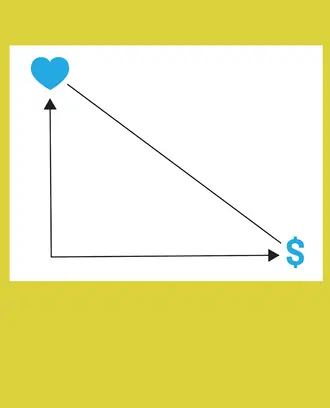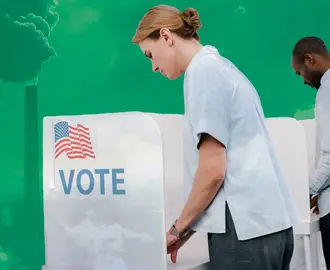Credit: Rob Dobi
Voters’ knowledge of political news varies widely, study shows
The way Americans consume and retain political news affects the way they think, behave, and vote — and new research suggests that might have unhealthy consequences for democracy. The reason? A study co-authored by MIT Sloan assistant economics professorfound that older, wealthier white males are more likely to be aware of news stories than any other demographic, potentially leading elected officials to skew policies their way.
The working paper, “Measuring Voters’ Knowledge of Political News,” written with Columbia University’s Andrea Prat, measured Americans’ knowledge of government news. The research identified inequalities in voter awareness of stories across age, gender, race, partisan preference, and socioeconomic status.
For the study, the researchers first devised a protocol for identifying the most important news stories: Each month, a panel of U.S. journalists, recruited through the Columbia School of Journalism, selected what they deemed to be the top three national stories about the federal government. Next, the researchers created a quiz to measure whether voters were aware of those stories. The quiz consisted of six statements, three of which described real news articles and three of which described plausible but ultimately false stories written by the same panel of reporters.
The researchers then partnered with the polling group YouGov, to ask voters to pick out the three stories that were true. The survey was conducted 11 different times between December 2018 and June 2020; nearly 8,000 individuals participated to create a representative sample of the U.S. adult population.Finally, the data was used to estimate a model of knowledge that distinguishes between several factors that might affect awareness, such as partisanship and news story salience, among others.
Here is what the researchers determined:
We live in a partisan echo chamber. Voters were 10% to 30% less likely to know stories unfavorable to their own political party; instead, they consume news that confirms their views.
Voters in the U.S. are 10% to 30% less likely to be aware of news stories unfavorable to their preferred political party.
Still, the average citizen is well informed about big stories. The researchers found that the typical voter knew 1.3 of the three most important news stories of the month (as determined by the journalists). About 64% of voters knew the most important story; the share of voters who knew the second and third most important stories was 37% and 32%, respectively.
“If you take the most important story of the month, big stories related to COVID-19 or the impeachment proceedings, 80% to 90% of citizens know about it,” Angelucci said. “This is not as dire as prior work led us to think. But if you move away from stories like COVID to stories that are perhaps less important or just received less attention, these numbers definitely go down.”
Minorities are less informed. The study found the most conversant voters tend to fall into the 50-70 age group, with wealthy, educated white men over the age of 47 being the best informed. The least-informed voters were young, low-income minority women.
The average minority female voter age 47 or less with a below-median income had a 30% probability of knowing a typical news story. By contrast, the average white male voter age 48 or older with an above-median income had a 44% probability of knowing the same story.
“If you’re an average old white man, you know many more news stories than if you are an average young unemployed woman minority,” Angelucci said. “Why? It’s really hard to tell. Of course, it’s related to education and wealth, and it’s also related to the media — [which is] probably disproportionally written by older white men.”
Overall, women were 2.9 percentage points less likely to know a typical story about the government.
“Unexpectedly, we found that women are less informed than men, and we don’t have a good explanation why. And these were very robust results,” Angelucci said.
And Hispanics and African Americans were 3.4 and 3.6 percentage points less likely to know a typical news story.
There are political implications to the data.
“There’s an idea in political science that politicians have incentives to cater to the better informed,” Angelucci said. “Politicians will do what’s best for old white men because they’re paying attention” and will be then rewarded with votes.
Messaging may help bridge the gap. “If you rank people by how well-informed they are, the average well-informed person knows twice as many stories as the average uninformed person,” Angelucci said. “It seems whole segments of society are just not getting the news. And it’s despite the fact that they spend hours consuming it, but they’re not absorbing it.”
This means that politicians might explore new ways of reaching people directly, he says, such as through social media.
“They cannot rely on people clicking on The New York Times to know about it. They won’t, so [politicians] need to reach them directly,” Angelucci said.
Very few people believe fake news. This was perhaps the most surprising takeaway of all, although Angelucci admitted that the survey might have failed to reach gullible segments of society.
Still, “If you look at the average fake story, it’s ridiculous. I think we should give a bit more credit to people’s intelligence,” Angelucci said.
Next, he hopes to replicate this work at the local level, where he suspects that voters might be less informed about behind-the-scenes dealings.
“I suspect that the findings will be a bit more worrisome,” he said.



